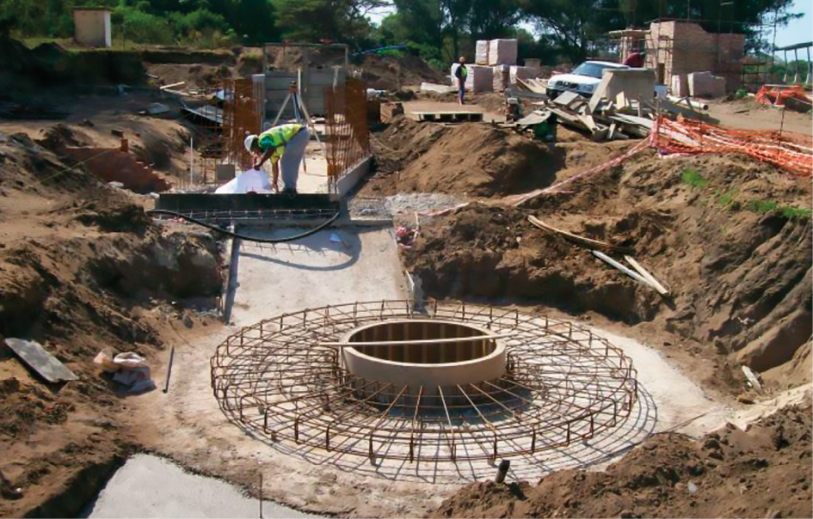In line with its vision to promote social and equitable economic development, Buffalo City Metropolitan Municipality (BCMM) has completed (and is currently busy with) a number of key projects in the metro. Three of these projects are detailed below.
Upgrading of the Quinera Wastewater Treatment Works (Phase 2)
The objective of this project (top image) was to provide additional treatment capacity in the Quinera Wastewater Treatment Works to cater for future development in the Quinera and Beacon Bay areas. This was achieved by increasing the Average Dry Weather Flow (ADWF) capacity of the existing Quinera Wastewater Treatment Works from 6ML/d to 18ML/d.
The second phase of the project comprised the installation and commissioning of various mechanical equipment supplied under Phase 1. It also included the construction of a new substation building and alterations to the existing buildings.
The works undertaken during this contract included:
- Construction of a new substation building
- Construction of a paved access road
- Construction of a water reticulation network
- Concrete demolition and repairs to existing aerator basin
- Installation and commissioning of mechanical equipment (supplied under Phase 1)
- Process commissioning of the plant
- Electrical and electronic works
Employment opportunities / beneficiaries
The project maximised the use of local labour from the nearby Mzamomhle and greater Gonubie area. About 88 000 of the approximately 122 000 man-hours invested in Phase 2 of the project comprised local labour. Operator training was also conducted where necessary for new equipment.
Furthermore, construction of the new fully enclosed inlet works with an odour control system has minimised odour pollution in nearby Mzamomhle and Eastward-Ho residential areas.
Enlargement and upgrading of the Gonubie Main Road
Basil Read was contracted to do the following:
- Widen the existing three lanes of Gonubie Main Road to four lanes from the Gulls Way intersection in the east to approximately 400m from the intersection with the N2 in the west. The entire four lanes will consist of a Continuous Reinforced Concrete Pavement (CRCP).
- Construct four new junctions on this portion of road, consisting of three new roundabouts and one free-flow T-junction.
- Create a new roundabout at the junction of Gonubie Main Road and the R102 (Meisies Halt) on the Western Side of the N2.
- Develop footpaths (or cycle paths) with grassed edges to the shoulder breakpoint where specified.
- Construct concrete V drains as required.
- Ensure six lanes for approximately 150m west of Junction 5 to allow for future merge and a left turning by-pass.
- Installation of Telkom ducts along the full length of the road.
- Diversion of existing Telkom cables/ducts, electricity cables, water mains and other services to align with BCMM’s Water and Sanitation Masterplan and LSDFP.
- Installation of sleeves under the proposed road for future services.
- Installation of street lights.
- Upgrading the intersection of Gullsway/Estuary Road.
Employment opportunities
- During the three-year lifespan of this project 308 job opportunities were created.
Provision of Internal Services and the Construction of Top Structures – Reeston
This project forms part of the broader Duncan Village Redevelopment Initiative. Upon completion of the project, beneficiaries will be relocated from Duncan Informal Settlement to Reeston. The intention is to de-densify the Duncan village by moving some people out and later develop in the space available after relocation has taken place.
Work started on 29 April 2014, with the completion dates revised to 19 October 2015 for Portion 1, and 20 November 2016 for Portion 2. Portion 1 comprised 460 units while Portion 2 comprised 536 units, giving a project total of 996 units. The completed work involved: cutting of platforms, completed foundation slabs, brickwork, roof structure, houses plastered (internal and external), glazing and doors, ceilings, internal plumbing and external plumbing, painting internal and external, and a Certificate of Completion.



